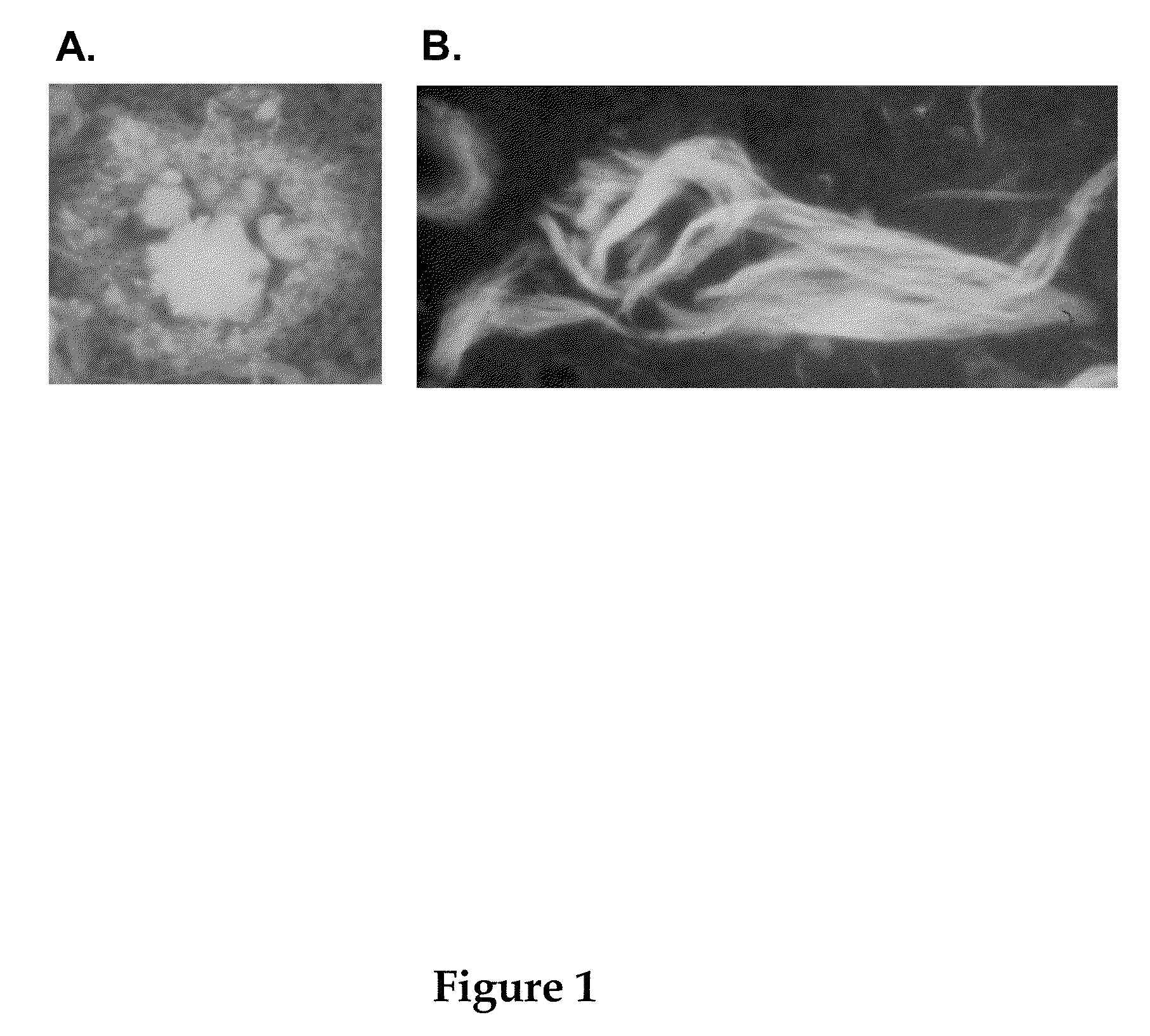Tau protein screening assay
a screening assay and tau protein technology, applied in the field of tau protein screening assay, can solve the problems of inability to identify useful targets or drugs, target identification using animal and cell models, genomics and proteomics, etc., and achieve the effect of stimulating long term potentiation and reducing the long term potentiation of tau protein
- Summary
- Abstract
- Description
- Claims
- Application Information
AI Technical Summary
Benefits of technology
Problems solved by technology
Method used
Image
Examples
example 1
Accumulation of Tau Oligomers and AD Progression
[0109]Recent publications show that over-expression of soluble tau caused neuron loss and memory impairment in mouse models for tauopathies, whereas NFTs were not associated with these phenotypes (SantaCruz et al. 2005; Spires et al. 2006; Yoshiyama et al. 2007). To determine if neurotoxic tau protein species can form before the development of tangles. Postmortem studies of tau oligomers in brain specimens during Braak stages 0-V. of AD were performed. The results showed a correlation between the accumulation of tau oligomers and AD progression (FIG. 3; Maeda et al., 2006).
example 2
Tau Oligomers Cause Synaptic Dysfunction
[0110]AD begins as a synaptic disorder that involves progressively larger areas of the brain over time (Masliah, 1995). To determine whether soluble extracellular tau in general or soluble tau oligomers specifically cause synaptic dysfunction a series of experiments were conducted. The experiments tested whether a brief application of tau oligomers was capable of producing a defect in LTP at the connection between Shaeffer collateral and CA1 pyramidal neurons in hippocampus of 3-5 month-old WT mice. Hippocampal slices were perfused with a solution containing tau protein (412 aa isoform) (2 μM) for 20 min before inducing LTP through tetanic stimulation of the Schaeffer collateral pathway. Potentiation in vehicle-treated slices was far greater than in tau-treated slices (levels of LTP: tau-treated slices equal to ˜130% at 120 min. after tetanus, vs ˜250% in vehicle-treated slices, n=6 for both, Two-way ANOVA: F(1,10)=21.98; p=0.001. (FIG. 4)
[011...
example 3
Tau Protein Preparation
[0112]The cDNA for Tau412 was purchased from OriGene and subcloned into the bacterial expression vector pET21B to produce the tau412 protein with a C-terminal 6× His tag.
[0113]The bacterial strain BL21(DE3) was used for protein expression. Standard protocols from the cell and vector distributor (Novagen) were used to grow the cells and express the protein. Briefly, cells were streaked on LB Ampicillin plate and a single colony was picked and grown overnight in 2 ml 2XYT medium with glucose and 100 mg / ml carbenicillin. The overnight culture was used to inoculate a 500 ml culture which was grown to an optical density of 0.8 U / ml at 600 nm wavelength. Protein expression was induced with 1 mM IPTG for 4 hours at which time cells were pelleted at 4° C. by centrifugation at 6000 g. Pellets were stored overnight at −80° C. Cell lysates were prepared with Cell Lytic B lysis buffer lysozyme, benzonase and protease inhibitors according to manufacturer's protocol (Sigma)...
PUM
 Login to View More
Login to View More Abstract
Description
Claims
Application Information
 Login to View More
Login to View More - R&D
- Intellectual Property
- Life Sciences
- Materials
- Tech Scout
- Unparalleled Data Quality
- Higher Quality Content
- 60% Fewer Hallucinations
Browse by: Latest US Patents, China's latest patents, Technical Efficacy Thesaurus, Application Domain, Technology Topic, Popular Technical Reports.
© 2025 PatSnap. All rights reserved.Legal|Privacy policy|Modern Slavery Act Transparency Statement|Sitemap|About US| Contact US: help@patsnap.com



